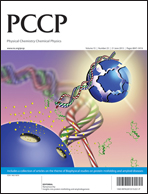High performance thylakoid bio-solar cell using laccase enzymatic biocathodes†
Abstract
Thylakoid membranes have previously been used for electrochemical solar energy conversion, but the current output and open circuit voltage are low, in part due to limitations of the cathode. In this paper, a thylakoid bioanode and laccase biocathode were combined in the construction of a bio-solar cell capable of light-induced generation of electrical power. This two-compartment cell showed a greater than 5-fold increase in short circuit current density and an open circuit voltage 0.275 V larger than that of a thylakoid bio-solar cell incorporating an air-breathing Pt cathode. The electrodes were then tested in several solutions of varying pH to evaluate the possibility of constructing a compartment-less bio-solar cell. This membrane-less cell, operating at pH 5.5, generated a short circuit photocurrent density of 14.0 ± 1.8 μA cm−2 which is 25% larger than the two-compartment cell and a similar open circuit voltage of 0.720 ± 0.018 V.


 Please wait while we load your content...
Please wait while we load your content...